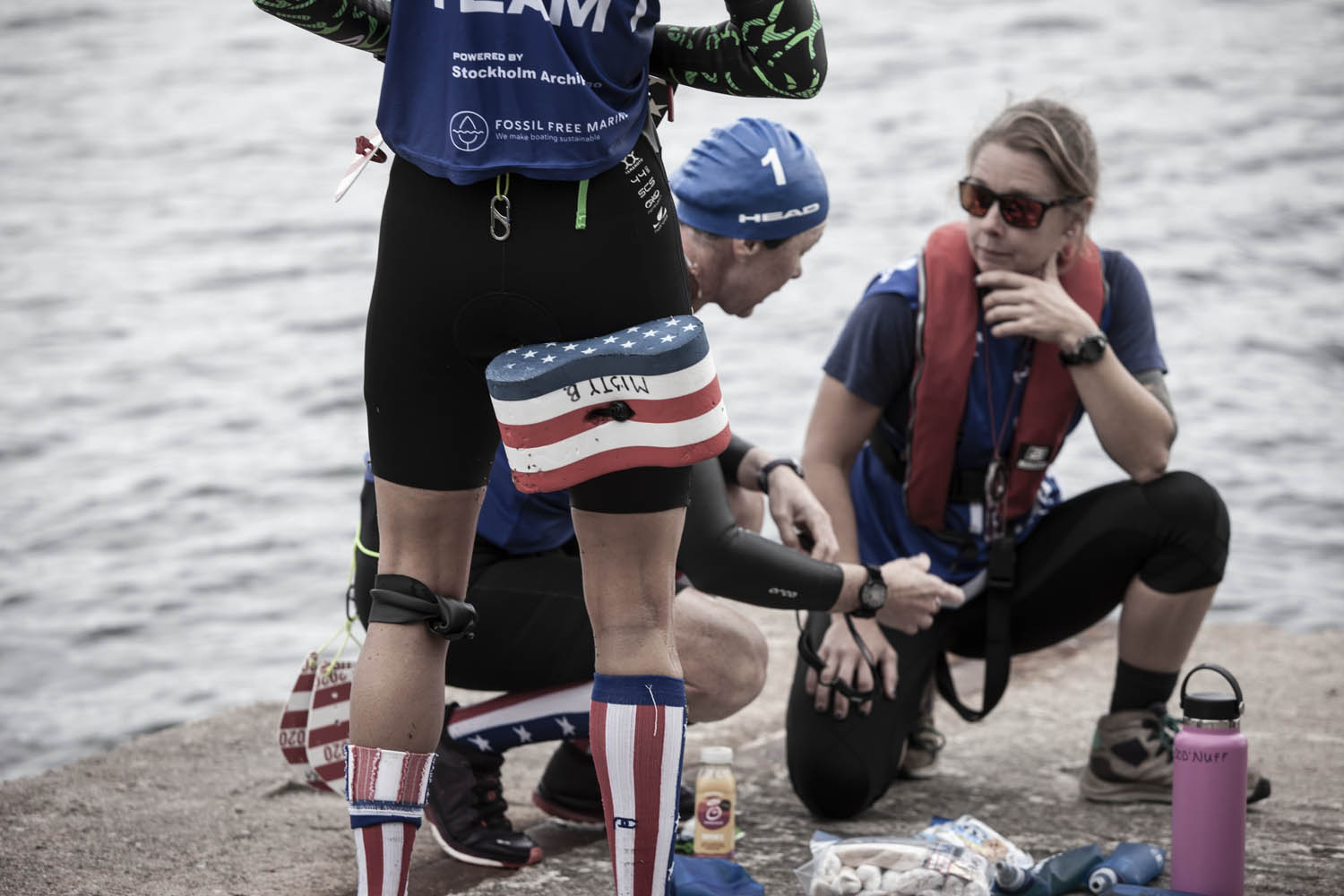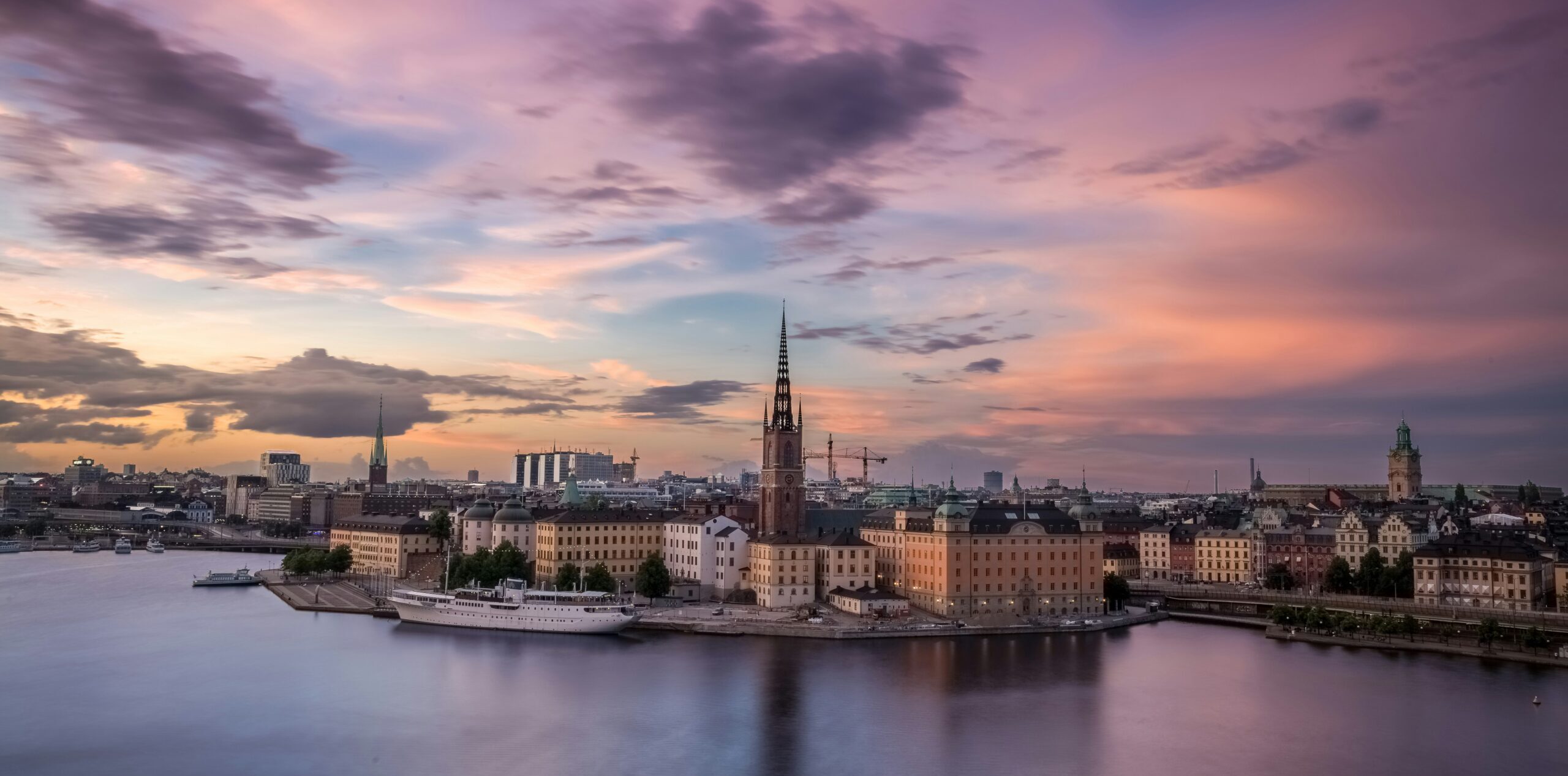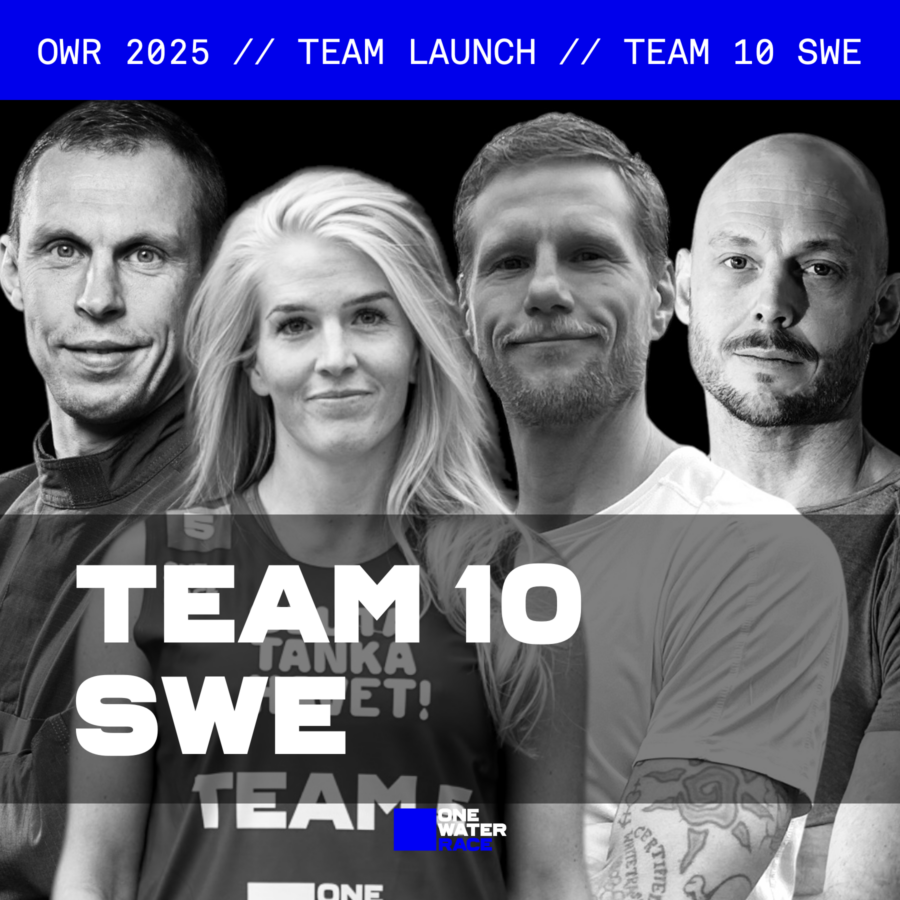On August 21, 2022 I boarded a ferry out of Stockholm, Sweden, with my teammates, seven other teams, press, filmmakers, and staff for a five- hour journey to the northernmost island of the archipelago, Arholma. The goal of every team on board was to successfully complete the upcoming 125-mile endurance race to the southernmost island, Landsort, in under 60 hours.
Our team of four was one of three American teams selected to attend the first running of this epic adventure. Team #1 was made up of myself (former elite swimmer and pro triathlete, most recently a competitive expedition adventure racer), Jarrod Shoemaker (2008 triathlon Olympian, former elite runner, and also current expedition adventure racer), Misty Becerra (my long-time swimrun partner, XTERRA national champion and adventurer), plus Kristen Smith—our support crew in the team boat who is a former Otillo swimrun racer and firefighter from North Carolina.
We all spent two days on Arholma—a roughly 1-mile by 3-mile island in the northeastern part of the Stockholm archipelago—going through pre- race meetings, last-minute race preparations, enjoying amazing food, and exploring the island during training sessions. We met some of the 90+ staff that would be assisting the seven teams through the challenging journey. This large group included boat skippers, safety runners, documentary filmmakers, social media experts, and so many more.
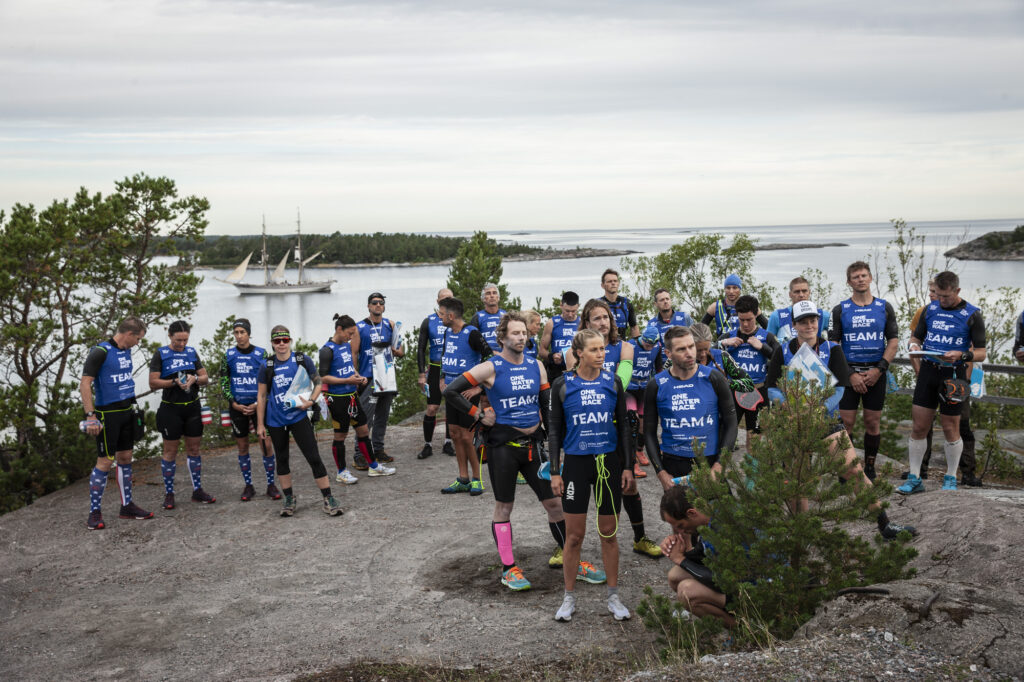
Tuesday morning started at 4 a.m. with a pre-race breakfast and a beautiful sunrise over the chilly Baltic Sea. At 6:30 a.m., the teams received the course maps for the first of five race segments. The One Water Race is designed more like an adventure race and less like a swimrun event. Teams did not have a set course to move through, instead choosing our own route to pass each checkpoint on the map. At the completion of each of the five segments, teams would receive the next set of maps. Much like adventure racing, navigation skills were very important to staying on track and choosing the most efficient route through the 100+ islands that dotted the landscape.
By 7 a.m., the 28 racers (three co-ed swimrunners plus a support crew on each team) were lined up and ready to head south for the next two-to- three days. The two local Swedish teams were the ones to watch—and follow if you could! They knew the islands like the back of their hands after years of swimrun training and attending local events scattered throughout the archipelago. They also understood the local land-usage customs (called the “Right of Public Access,” which is very different from Americans’ views on land ownership) and especially how to easily move through an electric livestock fence.
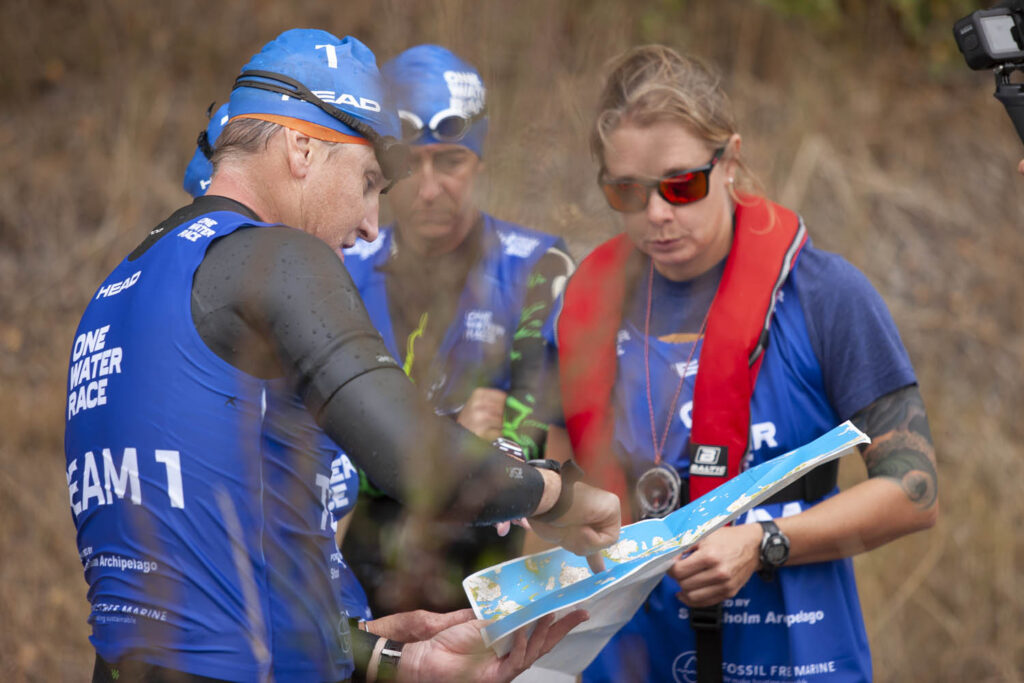
With only seven teams in the event, it was a rare treat to come across another team out in the wilderness of an uninhabited island that we might be trekking over. But most of the time it was just our little team of three, traversing yet another moss- and rock-filled island, accompanied only by our “safety runner” who was tasked with catching all our successes and failures, and highs and lows, on a GoPro for the media production team. Each island trek ended with us holding our breath and crossing our fingers as we approached the coast to (hopefully) find our navigator Kristen standing at the bow of our support boat with warm food and fresh hydration for us to swap out.
The rules said that no team could enter the water for a swim leg without a green light/flag from the boat, so during each of our island crossings, the talented boat skipper was winding their way around the island, through the shallow rocks, and waiting at the spot that we roughly marked with an “X” on the map. Sometimes Kristen yelled our names for five minutes into the woods to help us navigate to the same spot and sometimes we just walked out of the woods right where we should be.
After a surprisingly warm summer in the Scandinavian area, the water wasn’t too cold—but it was also not the 85-plus degree F bathwater that our team had been using for training in Florida during the last five months. Thanks to a generous sponsorship by Orca, our team had all the gear that we needed to survive the swims, including two sets of swimrun suits, every cold-water neoprene accessory for our extremities, and a full thermal wetsuit for the long night swims.
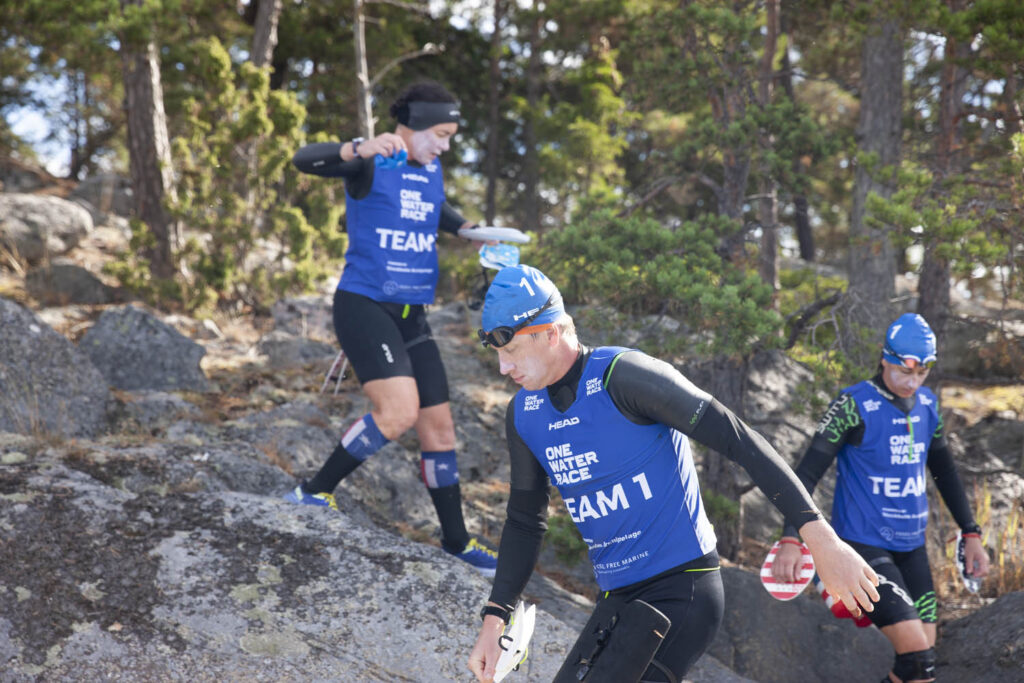
We were having an amazing adventure as we swam and ran through the islands during the first 24 hours of the race. We would swim next to our support boat at night while they shined beams of light on the next island and we would run through fields of cows and sheep waking up in the morning. As the second day went on, things started to wear down on us. My neck was no longer getting along with my wetsuit after sighting for 30-plus swims. Jarrod’s arms were no longer agreeing to swim with paddles. And Misty’s knees decided to boycott running when they were cold. It was a slow shift from pure enjoyment of the whole experience to dreading every transition with the second night approaching—especially when we got the fourth stage maps and realized that multiple two-to-four kilometer swims were in our future.
Kristen was incredible at staying calm and dealing with our emotions throughout the journey. Sometimes she would hand us freshly prepared food and we would just hand it right back with a disgusted look. And then at the next transition, she would hand us the same thing and we would devour it like starving children. After the race we got to hear about the race from her perspective and we learned that it required 30 minutes of time on land to crank up the portable stove and boil the 120 ounces of water that we would quickly consume over the next 10-15 islands. We also learned that our Gatorade powder supply was running precariously low and would have been a big issue if we hadn’t dropped out of the race —her potential plan was to offer us super-concentrated vegetable broth and throw it back at us when we refused.
But even with her positivity at every transition, including sharing messages of love and support from our families and friends back home that were awake through the night to watch for any updates, the negative voices in our head started getting louder and louder. I’ll be the first to admit, I complain very loudly—and about everything. But most of the time I’ll keep moving, especially if the group is still pushing forward. But then another voice in the group starts expressing negative feelings. And then it gets harder and harder to hear your inner cheering squad—the part of you who knows the chafing will heal, the muscles will recover, the nails will grow back, and the blisters will go away.
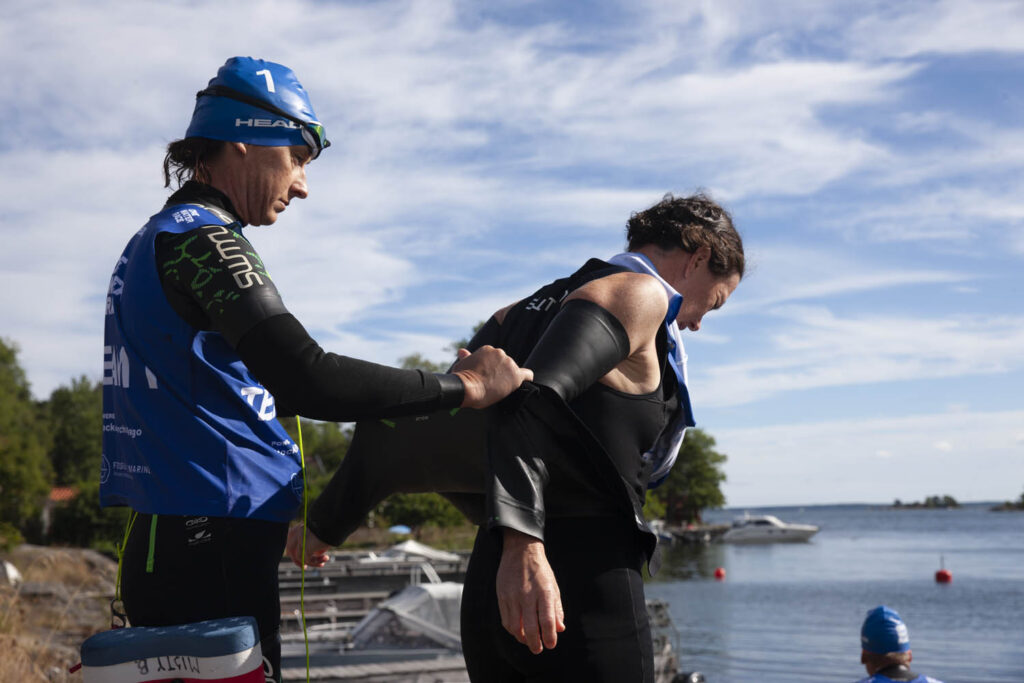
And so, it was there at checkpoint nine, the end of the third stage and the start of the fourth stage, that our team made the decision to abandon the race. At this point, there were still five teams forging ahead. Led by the king and queen of local swimrun, Sweden Team 4 was already halfway through the grueling 7K swim (the longest and most challenging segment of the race) and heading towards an amazing finish in just over 47 hours. On the following day, two more teams (Sweden Team 2 and Australia Team 8) would also make their way to the finish in under 60 hours.
Looking back at the maps, our team covered 75-80 miles of the total course during our 38 hours in the race. We crossed about 45 islands, with 45 swims between them. We watched the sunrise once and the sunset twice. We crossed paths with a moose on one of the final islands. We saw an incredible amount of Swedish beauty on the islands. But we also got our bodies beaten by the archipelago. It took three days of recovery in Stockholm, including night sweats, whole-body swelling, tick removal, neck bandages, and endless amounts of eating until we felt human again. And then we flew home and I got COVID…so the recovery continues!
The creators of the One Water Race had a dream that became a reality last week—to see if it was possible to swimrun from Arholma to Landsort. The path they chose for the race was not the easiest, (or most direct, or simplest, or most convenient) but it was an honor to be selected as one of the few teams to try and even more awe-inspiring to be in the presence of the athletes that did finish! It will be a pleasure to watch the next One Water Race from the comfort of my own computer as we follow the tracker dots of the new teams that face the ultimate proof of human capacity.
